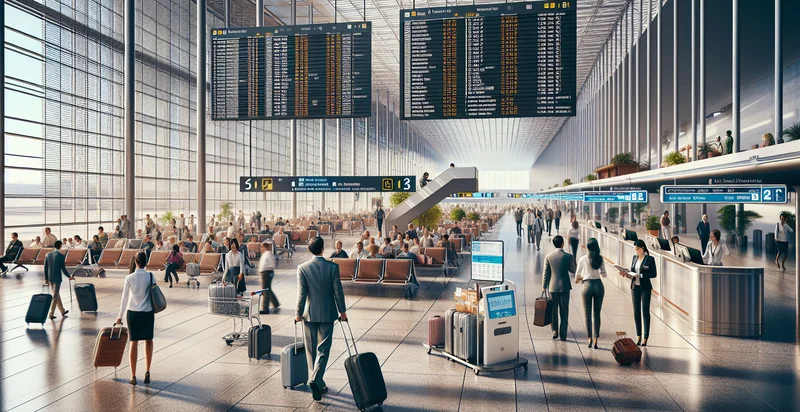Identify if airport terminal is open
using AI
Below is a free classifier to identify if airport terminal is open. Just upload your image, and our AI will predict if the airport terminal is open - in just seconds.

Contact us for API access
Or, use Nyckel to build highly-accurate custom classifiers in just minutes. No PhD required.
Get started
import nyckel
credentials = nyckel.Credentials("YOUR_CLIENT_ID", "YOUR_CLIENT_SECRET")
nyckel.invoke("if-airport-terminal-is-open", "your_image_url", credentials)
fetch('https://www.nyckel.com/v1/functions/if-airport-terminal-is-open/invoke', {
method: 'POST',
headers: {
'Authorization': 'Bearer ' + 'YOUR_BEARER_TOKEN',
'Content-Type': 'application/json',
},
body: JSON.stringify(
{"data": "your_image_url"}
)
})
.then(response => response.json())
.then(data => console.log(data));
curl -X POST \
-H "Content-Type: application/json" \
-H "Authorization: Bearer YOUR_BEARER_TOKEN" \
-d '{"data": "your_image_url"}' \
https://www.nyckel.com/v1/functions/if-airport-terminal-is-open/invoke
How this classifier works
To start, upload your image. Our AI tool will then predict if the airport terminal is open.
This pretrained image model uses a Nyckel-created dataset and has 2 labels, including Terminal Closed and Terminal Open.
We'll also show a confidence score (the higher the number, the more confident the AI model is around if the airport terminal is open).
Whether you're just curious or building if airport terminal is open detection into your application, we hope our classifier proves helpful.
Related Classifiers
Need to identify if airport terminal is open at scale?
Get API or Zapier access to this classifier for free. It's perfect for:
- Real-Time Passenger Information: Airports can utilize the image classification function to inform passengers about terminal operations. By accurately identifying whether a terminal is open or closed, travelers can receive real-time updates through digital displays or mobile apps, enhancing their journey experience and reducing confusion.
- Resource Allocation for Staff: Airport management can optimize staffing levels based on terminal availability. By knowing which terminals are open, human resources can allocate staff accordingly, ensuring efficient service during peak hours and improving overall operational efficiency.
- Automated Safety Protocols: The system can trigger automated safety protocols based on terminal status. For example, if a terminal is identified as closed, specific security measures or cleaning protocols can be initiated automatically, maintaining a safe environment for passengers and staff.
- Optimized Flight Operations: Airlines can use the classification function to enhance logistics and scheduling. If a terminal is confirmed to be open, airlines can better manage boarding processes and gate assignments, leading to more efficient turnaround times for flights.
- Dynamic Marketing Strategies: Marketing teams can leverage terminal status information to launch targeted promotions. For example, when a terminal is open, they might promote nearby restaurants and shops to increase passenger spending, taking advantage of increased foot traffic.
- Enhanced Visitor Services: Airports can improve visitor services by providing up-to-date information on terminal accessibility. The image classification function can help visitor centers give accurate directions and advice to travelers, ensuring they access the right terminals easily during busy periods.
- Maintenance Scheduling: Facilities management can schedule maintenance activities around terminal operations. By understanding when a terminal is open or closed, maintenance teams can ensure that any required work does not disrupt passenger flow, leading to better resource management and reduced operational downtime.


